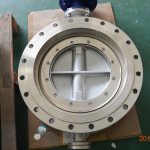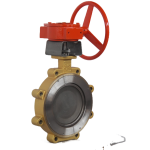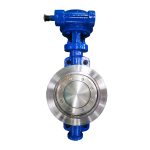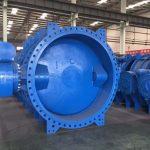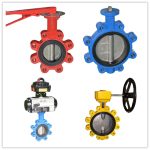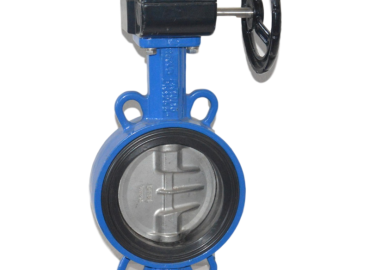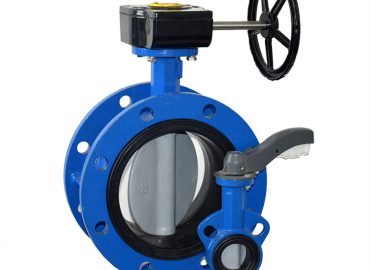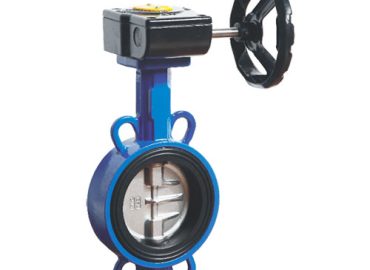Selecting the right double offset butterfly valve for your industrial application is a critical decision that can significantly impact your operations. These valves, known for their durability and efficiency, play a vital role in controlling the flow of fluids in various industrial settings. However, with a myriad of options available in the market, choosing the right one that perfectly suits your specific needs can be challenging. This blog post aims to guide you through the process, outlining the key factors you need to consider, steps to make the right selection, and tips for maintaining your double offset valve for optimal performance.
Introduction
Selecting the right double offset valve for your industrial application is an intricate process that requires a thorough understanding of both your operational needs and the characteristics of these highly specialized valves. Double offset valves, also known as high-performance butterfly valves, are widely appreciated for their durability, versatility, and efficiency. They are designed to withstand high-pressure environments and are commonly used in industries ranging from petrochemical to power generation and wastewater treatment. However, the selection process isn’t as simple as picking the first valve you come across. There are various factors you need to consider including the material of the valve, its size, pressure rating, temperature requirements, and flow control needs. Each of these elements plays a crucial role in determining how well the valve will perform in your specific application. Additionally, the selection process doesn’t end at buying the valve. Proper installation and regular maintenance are equally crucial to ensure the longevity of the valve and smooth operations. In this context, this blog post aims to serve as a comprehensive guide, providing you with all the necessary information and steps to select, install, and maintain the right double offset valve for your industrial application.
Brief overview of what a double offset valve is.
A double offset valve, also known as a high-performance wafer butterfly valve, is a specialized type of valve used primarily in industrial applications. The “double offset” refers to the unique design of the valve stem, which is set off-centre from both the centre of the disc and the centre of the pipe. This design allows the disc to move off the seat in a cam-like fashion, reducing friction and wear on the disc and seat during operation. It also allows the valve to handle higher pressure and temperature conditions compared to conventional butterfly valves. Double offset valves are known for their durability, reliability, and versatility, making them an ideal choice for a wide range of industrial applications.
Importance of choosing the right valve for industrial applications.
Choosing the right valve for industrial applications is crucial for several reasons. Firstly, the right valve ensures efficient and smooth operations. It helps control the flow of fluids accurately, maintaining the desired pressure and temperature levels. Secondly, each industrial application has its unique requirements regarding flow rate, pressure, and temperature. A mismatched valve can lead to operational inefficiencies or even equipment damage. Thirdly, selecting the right valve contributes to the safety of the operation. Valves that cannot withstand the pressure or temperature conditions of a specific application can fail, potentially leading to hazardous situations. Lastly, the right valve choice can also significantly impact maintenance costs and operational downtime. A well-chosen, high-quality valve will require less frequent maintenance and have a longer lifespan, leading to reduced operational costs over time.

What is a Double Offset Valve?
A double offset valve, also referred to as a high-performance butterfly valve, is a specialized type of control device used across various industrial applications. The term “double offset” stems from the unique design features of this valve. The stem of the valve is placed off-centre from two points: the centre of the disc that controls flow and the centre of the pipe or tube through which the fluid passes. This double offset design allows the disc to move in a cam-like motion, reducing friction between the disc and the seat during opening and closing operations. As a result, the valve experiences less wear and tear, leading to increased durability and a longer operational lifespan. Furthermore, this design allows the valve to accommodate higher pressure and temperature levels compared to traditional butterfly valves. Double offset valves are recognized for their robustness, reliability, and adaptability, making them a suitable choice for a diverse range of industrial settings, including oil and gas, power generation, water treatment, and more. Their ability to efficiently control fluid flow under various conditions contributes to the optimization of industrial processes, enhancing overall operational efficiency.
Detailed explanation of a double offset valve, its design and function.
A double offset valve, also known as a high-performance butterfly valve, is a specialized type of valve specifically designed for high-pressure and high-temperature industrial applications. The unique design of the double offset valve involves two off-centre points – hence the name ‘double offset’.
The first offset refers to the positioning of the shaft, which is located behind the sealing plane. This offset allows the disc to fully move away from the seal during operation, reducing friction and subsequent wear on the seal.
The second offset involves the shaft being placed off the centre of the pipe and the disc. This eccentric positioning allows the disc to rotate around an axis that is set back from the pipe’s centreline. As the valve opens or closes, the disc moves in a cam-like fashion, which reduces contact between the disc and the seat until the valve is almost fully closed. This minimizes wear and tear on the disc and seat, improving the valve’s lifespan.
In terms of function, the double offset valve is used to control fluid flow within a pipeline. The disc’s eccentric movement allows for precise control over the flow rate, making it suitable for applications where flow modulation is required. Furthermore, the design of the double offset valve enables it to handle higher pressure differentials and temperatures compared to other types of butterfly valves. This makes it an ideal choice for demanding industrial applications such as in the petrochemical, power generation, and water treatment industries.
Discuss common applications of double offset valves in various industries.
Double offset valves are extensively utilized across a wide range of industries due to their high-performance capabilities, durability, and versatility. In the oil and gas industry, these valves are often used in refineries and processing plants where precise flow control and high-pressure handling are paramount. They’re also prevalent in power generation plants, where they regulate the flow of steam and other high-temperature fluids in boiler and cooling systems. The water treatment industry employs double offset valves in pipelines for the regulation of water flow and pressure, and in wastewater management systems where corrosion resistance is crucial. In the chemical and petrochemical industries, these valves are used to control the flow of aggressive chemicals and gases, thanks to their robust design and materials that can withstand corrosive environments. Additionally, in the food and beverage industry, double offset valves are often chosen for their ability to maintain hygiene standards, as they provide tight shutoff and prevent backflow. Overall, the adaptability of double offset valves makes them suitable for a multitude of applications in various industries.
Factors to Consider When Choosing a Double Offset Valve
When choosing a double offset valve for your industrial application, several factors need to be taken into account to ensure optimal performance and longevity. One of the first considerations is the operational environment, including the pressure and temperature conditions that the valve will be subjected to. Double offset valves are designed to handle high pressures and temperatures, but it’s essential to select a valve with specifications that match your specific needs. The type of fluid to be controlled is another critical factor. The valve material should be compatible with the fluid to avoid corrosion or other types of damage. For instance, if you’re dealing with corrosive fluids, a valve made from corrosion-resistant materials like stainless steel would be suitable.
The size of the valve is also an important consideration. The valve must fit properly within your piping system and be capable of handling the expected flow rates. Incorrect sizing can lead to inefficiencies or even damage to the valve and piping system. In addition to these factors, you should consider the valve’s end connections, which need to be compatible with your existing piping system.
Furthermore, the maintenance requirements of the valve should be considered. A valve that requires frequent maintenance could lead to increased downtime and higher operational costs. Therefore, choosing a valve known for its durability and low maintenance, like a double offset valve, can be beneficial in the long run.
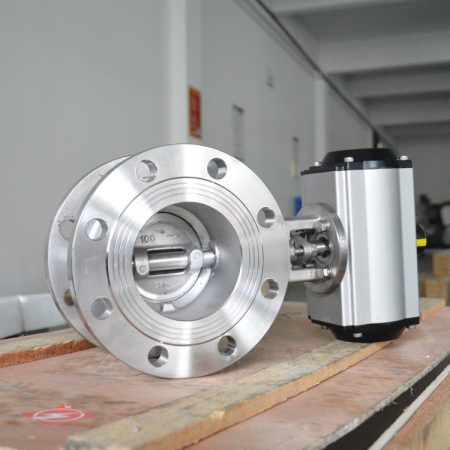
Lastly, it’s essential to consider the valve’s actuation method. Depending on your application, you might require manual, pneumatic, electric, or hydraulic actuation. Each of these methods has its advantages and disadvantages, so it’s crucial to choose the one that best fits your operational needs. By taking all these factors into account, you can select a double offset valve that will serve your industrial application effectively and efficiently.
Material: Explanation on why the material of the valve matters and how it affects performance.
The material of a valve plays a crucial role in its performance and longevity, especially in industrial applications. Different materials have varying properties that can significantly impact the valve’s ability to function effectively under specific conditions. For instance, materials like stainless steel and brass are commonly used due to their strength and durability, making them suitable for high-pressure environments.
Titanium, on the other hand, is often chosen for its lightness and strength, allowing for higher engine revs and more horsepower. Its lighter weight also reduces stress on the valve springs, which can lead to increased efficiency and performance.
Materials such as Inconel are used when dealing with extremely high exhaust gas temperatures due to their superior heat resistance.
Furthermore, the choice of valve material can directly affect its resistance to corrosion, especially important in industries dealing with corrosive fluids.
Lastly, the material’s wear resistance is critical since valves are consistently opening and closing, leading to potential wear and tear over time.
In summary, the material of a valve is a fundamental determinant of its performance, durability, and suitability for different industrial applications. Choosing the right material based on the application’s specific requirements can significantly enhance the valve’s operational efficiency and lifespan.
Size: Discussion on selecting the correct size of valve for specific applications.
Selecting the correct size of a valve for a specific application is a critical factor that can significantly impact overall system performance. The size of the valve directly affects the flow rate of the fluid or gas passing through it. If the valve is too small, it might restrict flow, causing pressure drops and inefficiencies in the system. Conversely, if the valve is too large, it could lead to unnecessary costs and potential control issues, as oversized valves may not operate efficiently at low flow rates.
The correct valve size should provide optimal flow control over the range of the valve’s opening and closing. This means that the valve should function effectively throughout its entire operational range, not just at full open or full close. To determine the appropriate valve size, you need to consider factors like the type of fluid, operating temperature, pressure, and the required flow rate.
Moreover, the valve’s size must align with the pipe size to ensure proper fit and sealing. Valve sizing can sometimes be complex, requiring calculations that involve the valve’s flow coefficient (Cv), which measures the valve’s capacity to pass fluid. However, correctly sizing your valve will ultimately result in improved process control, increased efficiency, and extended service life of the valve.
Pressure Rating: Importance of understanding the pressure requirements in your application and choosing a valve that can withstand it.
Understanding the pressure requirements of your specific application and choosing a valve that can withstand those pressures is crucial for ensuring safe, efficient, and reliable operation. Every valve is designed to operate within certain pressure limits, typically indicated by its pressure rating. This rating defines the maximum pressure that a valve can handle while maintaining its integrity and functionality. If a valve is subjected to pressures above its rated capacity, it could lead to valve failure, system breakdown, or even pose safety hazards such as leaks or explosions.
When selecting a valve, it’s important to consider both the normal operating pressure and any potential pressure surges in the system. The chosen valve should be able to handle the highest pressure it may encounter without compromising its performance or lifespan. For applications with fluctuating pressure conditions, a valve with a higher pressure rating might be necessary to accommodate any sudden increases in pressure.
Moreover, the pressure rating of a valve often goes hand-in-hand with its temperature rating, as changes in temperature can affect the pressure within a system. Therefore, understanding the interplay between pressure and temperature in your application can further guide your valve selection.
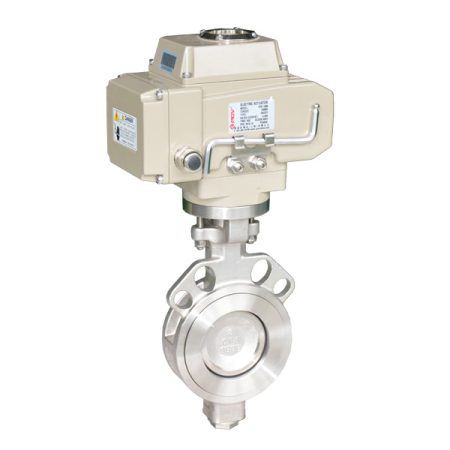
In summary, recognizing the pressure requirements of your application and selecting a valve with an appropriate pressure rating is fundamental to maintaining system efficiency, reliability, and safety.
Temperature Requirements: How temperature affects the performance of the valve and the importance of selecting a valve that can handle the operating temperature.
Temperature plays a pivotal role in the performance of a valve and must be carefully considered when choosing the right valve for a specific application. High temperatures can affect the material properties of the valve, potentially causing deformation or weakening of the material, which could lead to valve failure. On the other hand, extremely low temperatures may make certain materials brittle, increasing the risk of cracking or breakage.
Furthermore, temperature changes can also affect the pressure within a system, as fluids and gases expand or contract with temperature fluctuations. This means that a valve operating under high temperature and pressure conditions needs to be robust enough to handle these variations without compromising its sealing integrity or operational efficiency.
The type of fluid being controlled also influences the temperature requirements. Certain fluids may be highly reactive or unstable at high temperatures, requiring a valve that can maintain a lower operating temperature.
Hence, it’s crucial to select a valve made from materials that can withstand the operating temperature range of your application. The valve should also have a suitable temperature rating, which indicates the maximum and minimum temperatures the valve can safely handle. By considering the temperature requirements, you can ensure the longevity and reliable performance of the valve in your application.
Flow Control Needs: Discussing the role of the valve in controlling flow and how different designs can impact this.
A valve plays a critical role in controlling the flow of fluids or gases in a system. It regulates the rate of flow, the pressure, and the direction, ensuring that the system operates effectively and safely. By adjusting the size of the opening through which the fluid or gas passes, a valve can increase or decrease the flow rate, thereby controlling the speed and force of the flow.
Different valve designs can significantly impact how they control flow. For instance, a gate valve, characterized by a gate-like disc and a linear motion, is ideal for on/off control and minimal flow resistance when fully open. However, it’s not suitable for flow regulation due to its design.
Globe valves, on the other hand, with their spherical bodies and movable disc, are excellent for flow regulation. They provide better throttling capabilities compared to gate valves, but with a higher pressure drop due to the tortuous flow path.
Ball valves, featuring a spherical disc with a hole through the middle, offer excellent shut-off capabilities and are good for on/off control but are not typically used for throttling as the high velocity of flow against a partially open valve ball could damage the valve.
Butterfly valves, with a disc mounted on a rotating shaft, are cost-effective and lightweight, making them suitable for large pipe diameters. They provide moderate flow control and low-pressure drop but might not provide a tight seal in high-pressure applications.
In summary, the choice of valve design should match the specific requirements of the application, whether it’s precise flow control, minimal pressure drop, or reliable sealing. Understanding the strengths and weaknesses of each valve design can lead to more efficient and effective flow control in your system.
Steps to Select the Right Double Offset Valve
Selecting the right double offset valve involves a series of steps to ensure that it meets the specific requirements of your application. The first step involves understanding the nature of your application. This includes identifying the type of fluid or gas being handled, its temperature and pressure conditions, and the required flow rate. This information will help you determine the necessary specifications for the valve, such as its size, material, pressure rating, and temperature rating.
Next, consider the valve’s design and operation. Double offset valves, also known as high-performance butterfly valves, are designed to offer better sealing and lower torque compared to traditional centered disc butterfly valves. They have two offsets: one from the centerline of the pipe (the shaft is behind the disc), and the other from the centerline of the disc (the shaft is off-center from the disc). This design allows the disc to move off the seat with very little friction, reducing wear and extending the valve’s lifespan. Therefore, if your application requires frequent operation or deals with higher pressures and temperatures, a double offset valve could be an excellent choice.
The next step is to consider the valve’s end connections and ensure they are compatible with your existing piping system. Common end connection types include wafer, lug, flanged, and butt-welded, each with its advantages and disadvantages. Your choice will depend on factors like ease of installation and removal, the need for dead-end service, and the pressure-temperature conditions of your application.
Finally, you should consider the actuation method for the valve. Common options include manual, pneumatic, electric, and hydraulic actuation. The choice will depend on the level of control required, the availability of power sources, and the operational safety requirements.
By carefully considering these steps, you can select a double offset valve that will effectively meet your application’s needs, providing reliable performance and long service life.
Identifying your needs: Understand the specific requirements of your industrial application.
Understanding the specific requirements of your industrial application is the first and most crucial step in selecting the right equipment, such as valves. This involves a comprehensive evaluation of various factors. Start by identifying the type of medium (liquid, gas, or solid) that the valve will control. The nature of this medium (whether it’s corrosive, abrasive, or contains solid particles) can significantly influence the choice of valve material and design.
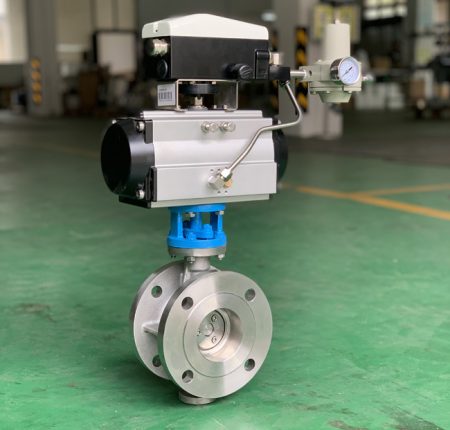
Next, consider the operating conditions. What are the expected pressure and temperature ranges? Are there rapid fluctuations in these parameters? High pressures and temperatures demand a valve with robust build quality and materials that can withstand such extreme conditions.
Flow rate is another critical factor. The size and design of the valve should be able to handle the required flow rate without causing significant pressure drops.
Also, think about the valve’s function. Is it for isolating the flow, regulating the flow, or non-return flow? Each function may require a different type of valve.
Lastly, consider the installation environment. Space limitations, accessibility for maintenance, and environmental conditions like humidity and salinity can also impact the choice of valve.
By clearly identifying your needs, you ensure that the chosen valve will perform optimally in your industrial application, providing reliability, efficiency, and longevity.
Research: Look up manufacturers, reviews, and specifications.
Once you’ve identified your specific needs, the next step is to conduct thorough research. Start by looking up different manufacturers that specialize in the type of valve you require. Consider their reputation in the industry, their years of experience, and the range of products they offer. A reputable manufacturer will typically provide high-quality valves that meet industry standards and have been tested for durability and performance.
Next, look for reviews and testimonials from previous customers. These can provide valuable insights into the quality of the valves, their performance, and the customer service provided by the manufacturer. However, remember to approach reviews with a critical eye, as not all reviews may be unbiased or accurate.
Additionally, study the specifications of the valves offered by each manufacturer. Compare these specifications with your application requirements to see if they match. Pay attention to details like the valve’s size, material, pressure rating, temperature rating, flow coefficient (Cv), and end connection type. You should also consider any additional features that the valve might offer, such as fire-safe design, blow-out proof stem, or anti-static devices.
Keep in mind that while cost is an important factor, it should not be the sole determinant of your decision. A cheaper valve might not necessarily meet all your application requirements or provide the same level of reliability and longevity as a slightly more expensive one.
By conducting careful research and comparing different options, you can make an informed decision that ensures the chosen valve is the best fit for your application.
Consultation: Speak with an expert or a consultant if necessary.
If you’re still unsure about the right valve for your application after conducting your research, it may be beneficial to consult with an expert or a consultant. These professionals have extensive knowledge and experience in the field and can provide valuable advice. They can help clarify any doubts or questions you may have, guide you through the selection process, and even suggest specific products or manufacturers that best suit your needs.
Consulting with experts can be especially helpful if your application has unique or complex requirements. For instance, if you’re dealing with highly corrosive media, extreme temperatures, or high pressures, an expert can recommend special materials or valve designs that can withstand these conditions. They can also advise on the appropriate installation methods and maintenance practices to ensure the longevity and optimal performance of the valve.
Remember, choosing the right valve is a crucial decision that can significantly impact the efficiency, safety, and cost-effectiveness of your operation. Therefore, investing time in consultation with an expert can prove to be a wise decision. It ensures that you make an informed choice that not only meets your immediate needs but also offers long-term reliability and value for your investment.
Purchase and Installation: Once you’ve made your selection, ensure proper installation for optimal performance.
After you’ve done your research, consulted with experts, and made your selection, the next step is to purchase your chosen valve and ensure its proper installation. The installation process is critical as even the best valve can malfunction if improperly installed.
Firstly, make sure that the valve is compatible with your existing piping system in terms of size, connection type, and material. Incorrect sizing or incompatible connections can lead to leaks, reduced performance, and potential damage to the valve or the system.
During installation, follow the manufacturer’s instructions carefully. These guidelines are designed to ensure the valve operates correctly and safely. They generally cover aspects like the direction of flow, positioning of the valve (horizontal or vertical), and any special requirements for bolting or tightening.
It’s also essential to consider the accessibility of the valve for future maintenance. Ensure that there is enough space around the valve for easy inspection, testing, and repair work.
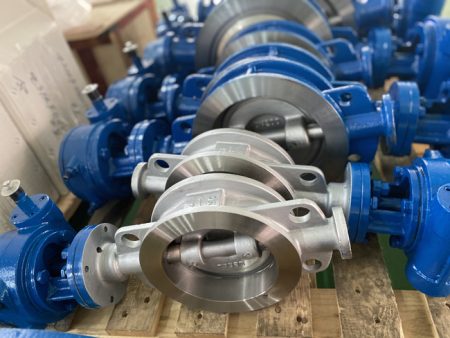
Once the valve is installed, it should be thoroughly tested under operating conditions to confirm its correct operation and performance. Look for any signs of leakage or abnormal noises.
By ensuring proper installation, you not only safeguard the performance and reliability of the valve but also extend its service life, leading to cost savings in the long run. Remember, a well-installed valve is a key component of an efficient, safe, and reliable industrial application.
Maintenance of Double Offset Valves
Maintaining double offset valves is crucial for their optimal performance and longevity. These valves, often used in demanding applications due to their excellent sealing and lower torque requirements, need regular attention to ensure they continue to function effectively.
The first step in maintenance is regular inspection. This involves checking the valve for any signs of wear, damage, or leakage. Special attention should be given to the sealing surfaces, as these are critical for the valve’s operation. Any signs of wear or damage could compromise the valve’s sealing ability and lead to leaks.
Next, the valve’s operation should be regularly tested. This involves operating the valve through its full range of motion to ensure it opens and closes correctly. Any stiffness or difficulty in operation could indicate a problem with the valve’s stem or disc, requiring further investigation.
It’s also essential to monitor the valve’s performance under operating conditions. Keep an eye on the pressure drop across the valve and the flow rate, as significant changes could indicate issues such as blockages or damage to the valve’s internal components.
If any problems are detected during inspections or performance monitoring, the valve may need to be serviced. This can involve cleaning the valve, replacing worn or damaged parts, or in some cases, replacing the entire valve. When servicing the valve, always use parts recommended by the manufacturer to ensure compatibility and maintain the valve’s performance.
Finally, remember that preventative maintenance is often more cost-effective than reactive maintenance. By regularly inspecting and servicing your double offset valves, you can detect and address issues before they lead to significant problems or system downtime, ensuring the reliable and efficient operation of your application.
Discuss regular maintenance practices for double offset valves.
Regular maintenance practices for double offset valves are essential for their efficient operation and extended service life. These practices begin with routine inspections, where the valve’s physical condition is checked for any visible signs of wear or damage. The sealing surfaces, disc, shaft, and seat should be closely examined for any degradation that may affect the valve’s functionality.
In addition to visual inspections, regular functional tests are important. This involves operating the valve through its full open and close cycles to ensure smooth operation. Any signs of stiffness or resistance could indicate issues with the disc or stem alignment, necessitating further investigation.
Cleaning the valve periodically is also crucial, especially when dealing with media that can cause deposits or corrosion. The cleaning process should follow the manufacturer’s guidelines to avoid damaging any components.
Monitoring the valve’s performance under operational conditions is another key aspect of maintenance. Keep an eye on parameters like flow rate and pressure drop across the valve. Significant changes in these parameters could signal potential issues, such as blockages or component failure.
Lastly, any worn or damaged parts should be replaced promptly with parts approved by the manufacturer. Neglecting this step can lead to more severe problems and can potentially compromise the entire system’s operation.
Through these regular maintenance practices, you can ensure that your double offset valves continue to operate optimally, providing reliable control within your industrial processes.
Explain the signs of malfunction or wear and tear.
Identifying signs of malfunction or wear and tear in double offset valves can help prevent more significant issues and potential system failures. One of the first signs of trouble is difficulty in operating the valve, such as stiffness or resistance during opening or closing. This could indicate a problem with the shaft alignment or a worn-out bearing.
Visible leakage around the valve is another clear sign of malfunction. This could be due to a degraded seal or damage to the disc or seat. Similarly, any abnormal sounds, such as squeaking or grinding during operation, could indicate wear and tear in the valve’s internal components.
Changes in the valve’s performance can also signal potential issues. For instance, a sudden increase in the pressure drop across the valve or a decrease in the flow rate could indicate a blockage or damage to the valve’s internal components.
Additionally, visible signs of corrosion or erosion on the valve’s body or components should not be ignored, as these can compromise the structural integrity of the valve and its ability to control flow effectively.
Remember, these signs often indicate that immediate maintenance or repair is needed. Addressing these issues promptly can help maintain the valve’s performance and extend its service life, ensuring the overall efficiency and safety of your industrial application.
Discuss the importance of timely replacement or repair to avoid major operational issues.
Timely replacement or repair of double offset valves is vital to avoid major operational issues. A malfunctioning valve can lead to inefficiencies in the system, such as reduced flow rate and increased energy consumption. More seriously, it could result in uncontrolled flow, leading to potential safety hazards and damage to other equipment.
If a valve shows signs of wear and tear or malfunction, it should be repaired or replaced promptly. Ignoring these signs can lead to more severe problems over time. For instance, a small leak can gradually worsen, leading to significant fluid loss and potentially hazardous working conditions. Similarly, a stiff or hard-to-operate valve can strain the actuator or operator, leading to premature failure.
Moreover, timely repairs and replacements help maintain the efficiency and reliability of your industrial process. They ensure that the valve continues to provide effective flow control, reducing downtime and improving productivity.
In addition, regular maintenance and prompt repairs can extend the service life of the valve, providing better return on investment. It’s always more cost-effective to address minor issues promptly than to deal with major repairs or complete system shutdowns later.
In conclusion, timely replacement or repair of your double offset valves is crucial for maintaining operational efficiency, ensuring safety, and achieving long-term reliability.

Conclusion
In conclusion, the process of selecting the right double offset valve for your industrial application is a critical task that requires careful consideration. It involves understanding your specific requirements, conducting thorough research, consulting with experts when necessary, and ensuring proper installation and maintenance.
Each step in this process plays a vital role in ensuring optimal performance and reliability. Understanding your specific requirements helps you narrow down your choices and focus on valves that are suitable for your application. Researching different types of valves, their features, and their pros and cons allows you to make an informed decision. Consulting with experts can provide valuable insights and recommendations, particularly for complex or unique applications.
Installation is equally important as improper installation can lead to valve malfunction and potential damage to your system. Therefore, it’s crucial to follow the manufacturer’s instructions and ensure the valve is correctly fitted, positioned, and tested.
Lastly, regular maintenance is key to preserving the valve’s performance and longevity. This includes routine inspections, cleaning, functional tests, performance monitoring, and timely repairs or replacements. By adhering to these practices, you can detect and address issues early, preventing major operational problems and extending the service life of the valve.
Selecting the right double offset valve is not just about choosing a product; it’s about making a strategic decision that impacts the efficiency, safety, and cost-effectiveness of your operation. So, take the time to go through this process meticulously. Your diligence will pay off in the form of a reliable, efficient, and durable valve that meets your needs and offers excellent value for your investment.
Recap of the importance of selecting the right double offset valve for your industrial application.
In recap, selecting the right double offset valve for your industrial application is a decision of paramount importance. The right choice can significantly enhance the efficiency, safety, and reliability of your operation, while a poor choice can lead to operational challenges, increased maintenance costs, and potential system failures. The process involves understanding your specific requirements in terms of media type, pressure, temperature, and flow rate, as well as researching different valve options, consulting with experts, and ensuring correct installation and regular maintenance. By investing time and effort into this process, you can ensure that you select a valve that not only meets your needs but also offers long-term durability and excellent return on investment.
Encouragement to invest time and resources in making the right choice to ensure efficiency and longevity of operations.
Investing time and resources in making the right choice for your double offset valve is not just a wise decision, it’s an essential one. The right valve can significantly increase the efficiency of your operations, reduce maintenance costs, and extend the lifespan of your equipment. It’s more than just a component; it’s a vital part of your industrial process that directly impacts your operation’s overall performance. So, take the time to understand your specific requirements, research your options, consult experts, and ensure proper installation and maintenance. This investment will pay off in the form of an efficient, reliable, and long-lasting operation, ultimately contributing to the success of your business. Remember, in industrial applications, the value of the right choice far outweighs the cost.
Final thoughts and call to action for readers to share their experiences or questions.
In conclusion, selecting the right double offset valve is a crucial step in ensuring efficient and long-lasting industrial operations. We hope this discussion has provided you with valuable insights and guidance in making that choice. However, we understand that every situation is unique, and you might still have questions or concerns. Therefore, we encourage you to share your experiences or ask any questions you might have. Your input could help others facing similar decisions, and your questions might spark further discussions that could benefit all readers. Remember, in complex fields like this, sharing knowledge and experiences is one of the best ways to learn and improve. So, don’t hesitate to join the conversation – your contribution is important!


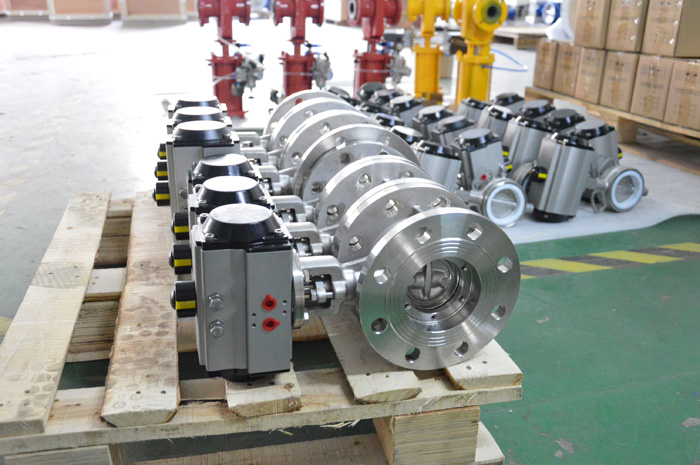
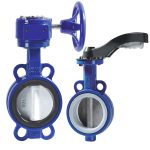
-150x150.jpg)
